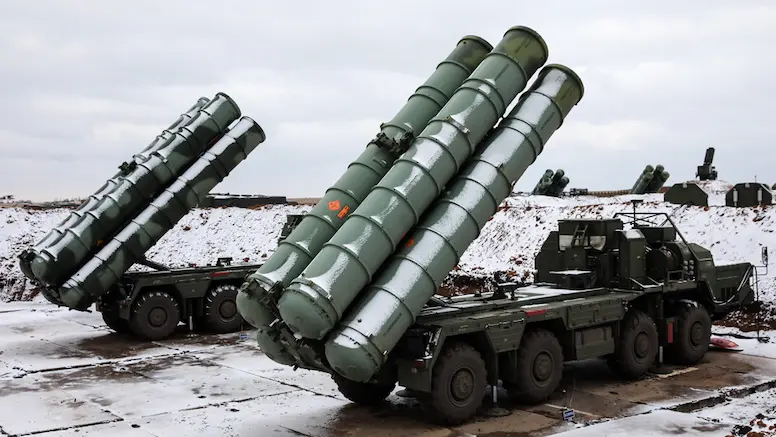
Operation Sindoor has redefined India’s approach to counterterror operations and air defense strategy
300-Km Missile Strike shatters Air Combat record – In a stunning revelation that has sent ripples across global defense circles, Indian Air Force IAF Chief Air Chief Marshal Amar Preet Singh confirmed that India successfully shot down a Pakistani surveillance aircraft from a distance of 300 kilometres – marking the largest-ever recorded surface-to-air kill in military history. The announcement, made during the Air Chief Marshal LM Katre Memorial Lecture in Bengaluru, sheds light on the scale, precision, and strategic depth of Operation Sindoor, India’s retaliatory military campaign launched in May 2025.
The Missile Strike Shatters And Changed the Game
Operation Sindoor was India’s direct response to the April 22 terror attack in Pahalgam, Jammu & Kashmir, which claimed 26 lives. In the early hours of May 7, Indian forces launched a coordinated offensive targeting nine terror camps across Pakistan and Pakistan-occupied Kashmir (PoK). But what truly set this operation apart was the air defense breakthrough.
Key Highlights:
- Six Pakistani aircraft shot down, including five fighter jets and one high-value surveillance platform-likely an AWACS or ELINT aircraft.
- The surveillance aircraft was destroyed 300 km away, using India’s S-400 air defense system, a Russian-made platform known for its long-range precision.
- The operation also targeted command centers, radar installations, and aircraft hangars, including the Jacobabad F-16 hangar, which was reportedly half-destroyed.
“This is actually the largest-ever recorded surface-to-air kill that we can talk about,” said Air Chief Marshal Singh.
The strike not only neutralized a critical intelligence asset but also demonstrated India’s ability to engage targets deep within enemy territory without crossing borders.
Intelligence, Precision, and Political Will
According to the IAF Chief, Operation Sindoor was a high-tech war fought over 80-90 hours, involving drones, cruise missiles, and electronic warfare. The success of the mission was attributed to:
- Real-time satellite imagery and electronic intercepts.
- Political clarity: “There were very clear directions. No restrictions were put on us,” Singh noted.
- Inter-agency coordination: The Chief of Defence Staff (CDS) and National Security Advisor (NSA) played pivotal roles in synchronizing efforts across the Army, Navy, and Air Force.
The operation was designed to be calibrated and mature, avoiding civilian casualties while delivering maximum strategic impact. Strikes on terror camps in Bahawalpur and Muridke were executed with such precision that adjacent buildings remained intact, according to satellite images shared by the IAF.
S-400: The Game-Changer
India’s S-400 Triumf air combat defense system, acquired from Russia, emerged as the star of Operation Sindoor. Capable of engaging targets up to 380 km away, the system was instrumental in:
- Shooting down five Pakistani fighter jets mid-air.
- Neutralizing a surveillance aircraft at 300 km.
- Preventing Pakistani aircraft from deploying long-range glide bombs, thanks to its multi-layered radar and missile tracking capabilities.
“Our air defense system has done a wonderful job. The S-400 system has really kept their aircraft away from their weapons,” Singh emphasized.
The success of the S-400 deployment has not only validated India’s investment in advanced air defense but also sent a clear message to adversaries about the country’s evolving military capabilities.
Strategic Impact and Future Implications
Operation Sindoor has redefined India’s approach to counterterror operations and air defense strategy. Unlike previous missions-such as the 2019 Balakot strike, which faced criticism for lack of visible damage-Sindoor delivered tangible results:
- Over 100 terrorists eliminated across nine camps.
- Multiple Pakistani airbases damaged, including Sukkur, Bholari, and Jacobabad.
- Two command centers (Murid and Chaklala) and six radar systems neutralized.
“We were able to take care of that ghost of Balakot… This time, we showed the world what we achieved,” Singh said.
The operation also prompted a strategic recalibration in Pakistan, with its military reportedly acknowledging that continued conflict would lead to greater losses.
A New Era in Air Warfare
India’s execution of Operation Sindoor marks a paradigm shift in how modern warfare is conducted. With long-range precision, real-time intelligence, and inter-agency coordination, the country has demonstrated its ability to respond decisively to terror threats while maintaining strategic restraint.
The 300-km surface-to-air kill is not just a military milestone, it’s a symbol of deterrence, a message of capability, and a testament to technological evolution in defense.
As global powers take note, India’s defense doctrine is clearly entering a new phase, one where distance is no barrier, and precision is the norm.
Missiles, Maneuvers and Mistrust: Could Turkey’s S-400 Gamble Arm Pakistan Against India?